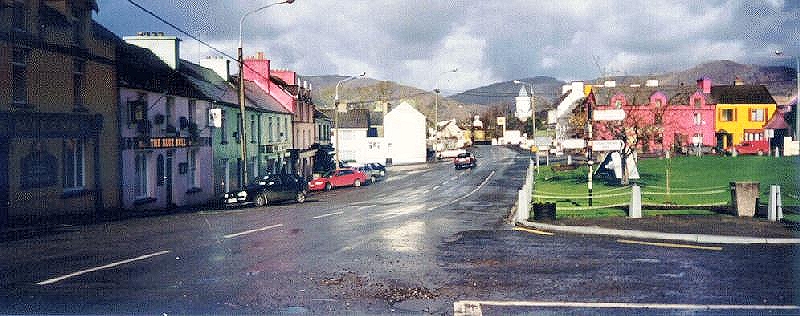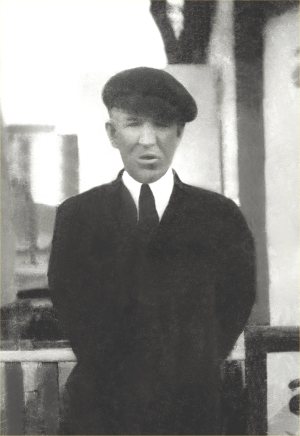
South Square, Sneem, Kerry, Ireland

South Square, Sneem, Kerry, Ireland

Thomas Nicholson |

Sarah (Glass) Nicholson |
The Great Famine, also known as the Great Hunger, the Great Starvation, the Famine (mostly within Ireland) or the Irish Potato Famine (mostly outside Ireland), was a period of mass starvation and disease in Ireland from 1845 to 1852.
During the Great Hunger, about 1 million people died and more than a million fled the country, causing the country's population to fall by 20-25%, in some towns falling as much as 67% between 1841 and 1851. Between 1845 and 1855, no less than 2.1 million people left Ireland, primarily on packet ships but also steamboats and barks in one of the greatest mass exoduses from a single island in history. The proximate cause of the famine was a potato blight which infected potato crops throughout Europe during the 1840s, causing an additional 100,000 deaths outside Ireland and influencing much of the unrest in the widespread European Revolutions of 1848. From 1846, the impact of the blight was exacerbated by the British Whig government's economic policy of laissez-faire capitalism. Longer-term causes include the system of absentee landlordism and single-crop dependence. The famine was a watershed moment in the history of Ireland, which was ruled directly by Westminster as part of the United Kingdom of Great Britain and Ireland from 1801 to 1922. The famine and its effects permanently changed the island's demographic, political, and cultural landscape, producing an estimated 2 million refugees and spurring a century-long population decline. For both the native Irish and those in the resulting diaspora, the famine entered folk memory. The strained relations between many Irish and their ruling British government worsened further because of the famine, heightening ethnic and sectaria
On March 17, 1846, Saint Patrick's Day, one of the first shipments of famine refugees left Dublin for New York. During the next five years more than a million people followed, driven by hunger to Canada or the United States.
lise Reclus, the great French geographer, anarchist, vegetarian, and naturist, who arrived in Ireland at the end of the famine, noted that within a few miles of the wealthiest island in the world there live the most wretched human beings in Europe and observed that in no other country has famine committed such ravages as on the fertile soil of Ireland.
The Great Famine killed a million people and forced a similar number to emigrate, while vast quantities of food produced in Ireland was exported to Britain for profit.
In the decades preceding the famine, agricultural labourers and tenant farmers had staged numerous violent revolts. They had suffered successive famines throughout the 19th-century, and in 1841 almost half the homes in Ireland were single-room mud cabins. They fought these miserable conditions through secret societies known to history as Whiteboy groups. Members of these secret organisations were bound by elaborate oaths and rituals. They demanded lower rents and tithes, increased wages, and fairer land distribution, and they pressed their claims with property destruction, animal mutilation, assault, and even murder.
Copyright © Richard Booth - Bradenton, Florida U.S.A.